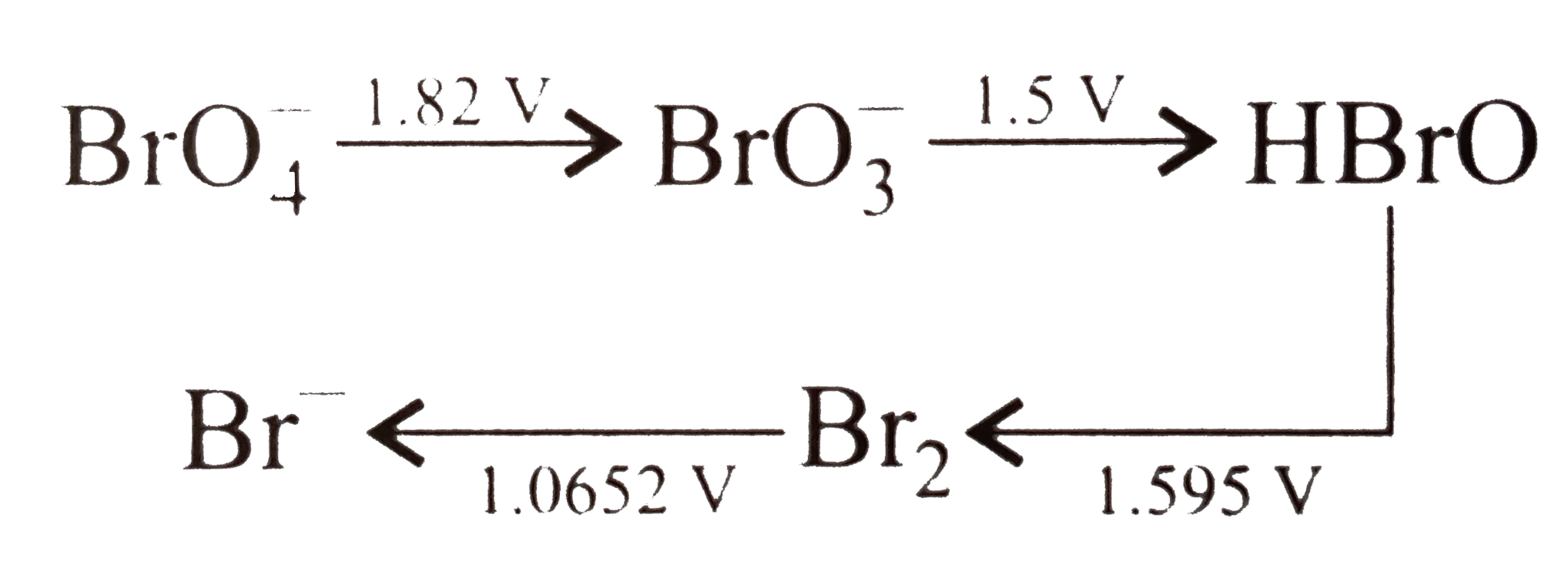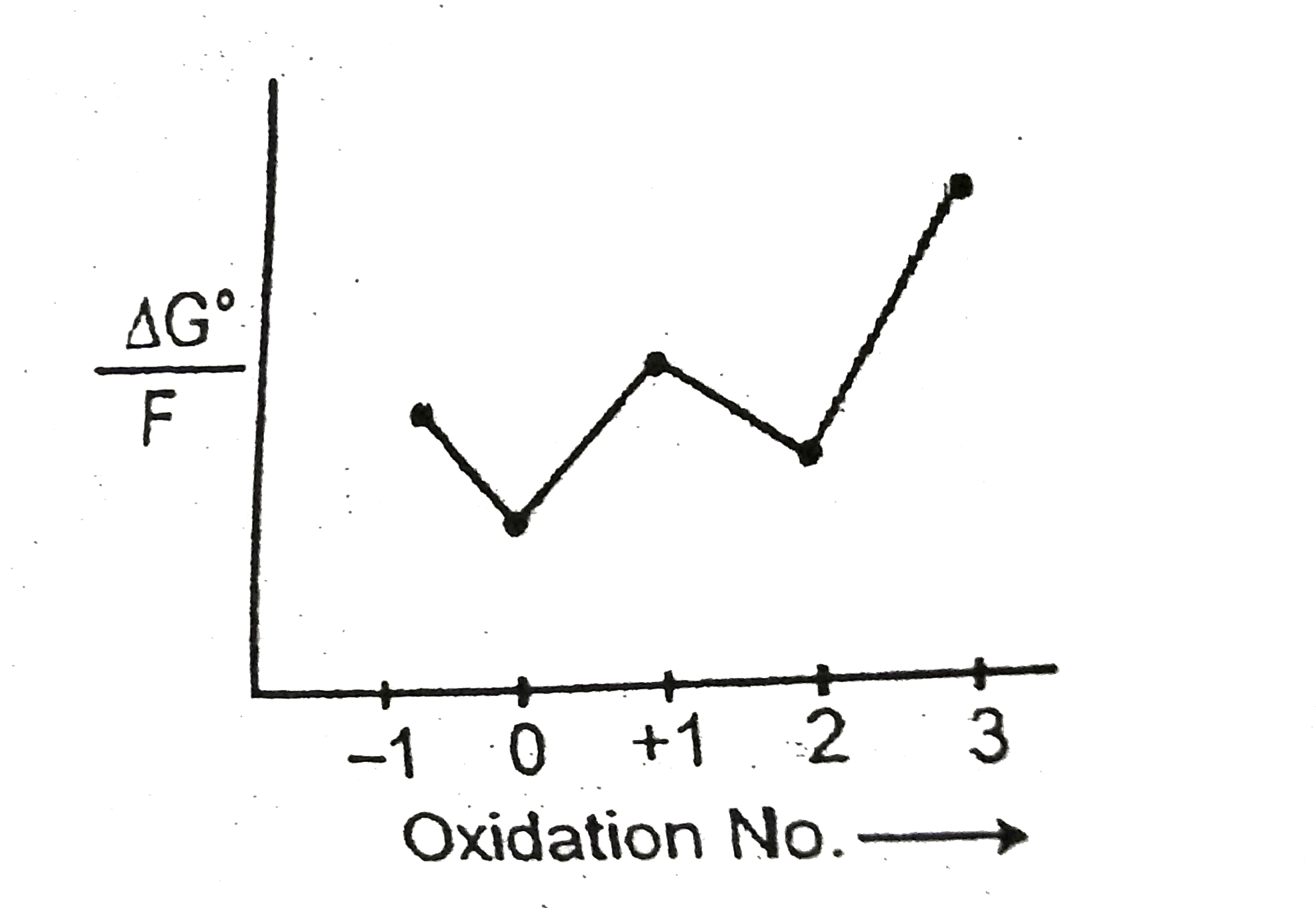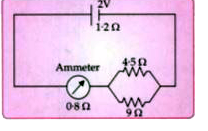Consider the change in oxidation state of Bromine corredponding to different emf values as shown in the diagram below :
 .
.
The species undergoing disproportionation is .
Br2
BrO−4
BrO−3
HBrO
The correct Answer is:D
Key Concept The reaction in which same species is oxidised as well as reduced is called disproportionation reaction. Firstly, calculate the value of E∘cell of each species undergoing disproportionation reaction. The reaction whose E∘cell value is positive will be feasible (spontaneous).
(i) Given, BrO−3→HBrO,EBrO−3/HBrO=1.5V
BrO−3→BrO−4,EBrO−3/BrO−4=−1.82V
∴2+5BrO−3→+1HBrO++7BrO−4
E∘cell=E∘red+E∘⊗
E∘BrO−3/HBrO+E∘BrO−3/BrO−4
=1.5−1.82=−0.32V
(ii)+1HBrO→0Br2,E∘HBr∅Br2=1.595V
+1HBrO→+5BrO−3,E∘HBr∅BrO−3=−1.5V
+12HBrO→0Br2++5BrO−3
E∘cell=EBr2/Br−+∘+E∘Br2/HBrO
=1.0652−1.595=−0.5298V
∴ Among the given options, only HBrO undergoes disproportionation.
Similar Questions
Consider the change in oxidation state of Bromine corredponding to different emf values as shown in the diagram below :
 .
.
The the species undergoing dispropprtionation is .View SolutionConsider the change in oxidation state of Bromine corredponding to different emf values as shown in the diagram below :
 .
.
The the species undergoing dispropprtionation is .View Solution
Knowledge Check
- Question 1 - Select One
In which of the following compounds oxidation state of chlorine has two different values?
ACaCl2BNaClCCaOCl2DCCl4 - Question 2 - Select One
An ideal gas undergoing a change of state from A to B through four different paths I, II,III and IV as shown in the P-V diagram that lead to the same change of state tyhen the change in internal energy is
 Asame in I and II but not in III and IVBsame in III and IV but not I I and IICsame in I, II and III but not I IVDsame in all the four cases
Asame in I and II but not in III and IVBsame in III and IV but not I I and IICsame in I, II and III but not I IVDsame in all the four cases
How can we show that change in oxidation state is different from variable oxidation state for non transition element ?
View SolutionIf an element can exist in several oxidation states, it is convernient to display the reduction potentials correspondingg to the various half reactions in diagrammatic form, know as latimer diagram the latimer diagram for chlorine in acid solutio is
CIO−4+1.20V−−−−→CiO−3+1.18V−−−−→HClO2+1.60V−−−−→HClO1.67V−−→Cl21.36V−−→Cl− in basic solution.
ClO−40.37V−−→ClO−30.30V−−→ClO−20.68V−−→ClO−0.42V−−→Cl21.36V−−→Cl− The standard potentials for two nonadjacent species can also be calculateed by using the concept that △G∘ as an additive property but potential is not an additive property and △G∘=−nFx0. if a given oxidation stateis a stronger oxidising agent than the next higher oxidation state, disproportionation can occur. The reverse of disproportionation is called comproportionation. The relative stabilities of the oxidation state can also be understood by drawing a graph of △G∘/F against oxidation state, known as frost diagram, choosing the stability of zero oxidation state arbitrarily as zero. The most stable oxidation state of a species lies lowest in the diagram, disproportionation is spontaneous if the species lies above a straight line joining its two product species.
Q.
For a hypothetical element, the frost diagram is shown in figure.? which of the following oxidation state is least stable?View SolutionIf an element can exist in several oxidation states, it is convernient to display the reduction potentials correspondingg to the various half reactions in diagrammatic form, know as latimer diagram the latimer diagram for chlorine in acid solutio is
CIO−4+1.20V−−−−→CiO−3+1.18V−−−−→HClO2+1.60V−−−−→HClO1.67V−−→Cl21.36V−−→Cl− in basic solution.
ClO−40.37V−−→ClO−30.30V−−→ClO−20.68V−−→ClO−0.42V−−→Cl21.36V−−→Cl− The standard potentials for two nonadjacent species can also be calculateed by using the concept that △G∘ as an additive property but potential is not an additive property and △G∘=−nFx0. if a given oxidation stateis a stronger oxidising agent than the next higher oxidation state, disproportionation can occur. The reverse of disproportionation is called comproportionation. The relative stabilities of the oxidation state can also be understood by drawing a graph of △G∘/F against oxidation state, known as frost diagram, choosing the stability of zero oxidation state arbitrarily as zero. The most stable oxidation state of a species lies lowest in the diagram, disproportionation is spontaneous if the species lies above a straight line joining its two product species.
Q. What is the potential couple ClO−Cl− at pH=14?View SolutionIf an element can exist in several oxidation states, it is convernient to display the reduction potentials correspondingg to the various half reactions in diagrammatic form, know as latimer diagram the latimer diagram for chlorine in acid solutio is
CIO−4+1.20V−−−−→CiO−3+1.18V−−−−→HClO2+1.60V−−−−→HClO1.67V−−→Cl21.36V−−→Cl− in basic solution.
ClO−40.37V−−→ClO−30.30V−−→ClO−20.68V−−→ClO−0.42V−−→Cl21.36V−−→Cl− The standard potentials for two nonadjacent species can also be calculateed by using the concept that △G∘ as an additive property but potential is not an additive property and △G∘=−nFx0. if a given oxidation stateis a stronger oxidising agent than the next higher oxidation state, disproportionation can occur. The reverse of disproportionation is called comproportionation. The relative stabilities of the oxidation state can also be understood by drawing a graph of △G∘/F against oxidation state, known as frost diagram, choosing the stability of zero oxidation state arbitrarily as zero. The most stable oxidation state of a species lies lowest in the diagram, disproportionation is spontaneous if the species lies above a straight line joining its two product species.
Q. Which of the following statement is correct?View SolutionA cell of emf 2 V and internal resistance 1.2Ω is connected with an ammeter of resistance 0.8Ω and two resistors of 4.5Ωand9Ω as shown in the diagram below:

What is the potential difference across the terminals of the cell ?View SolutionAn element has the minimum and maximum oxidation states as −X and +X respectively. It does not have the possibility of undergoing disproportionation in any of its compounds. What is the value of X?
View Solution

